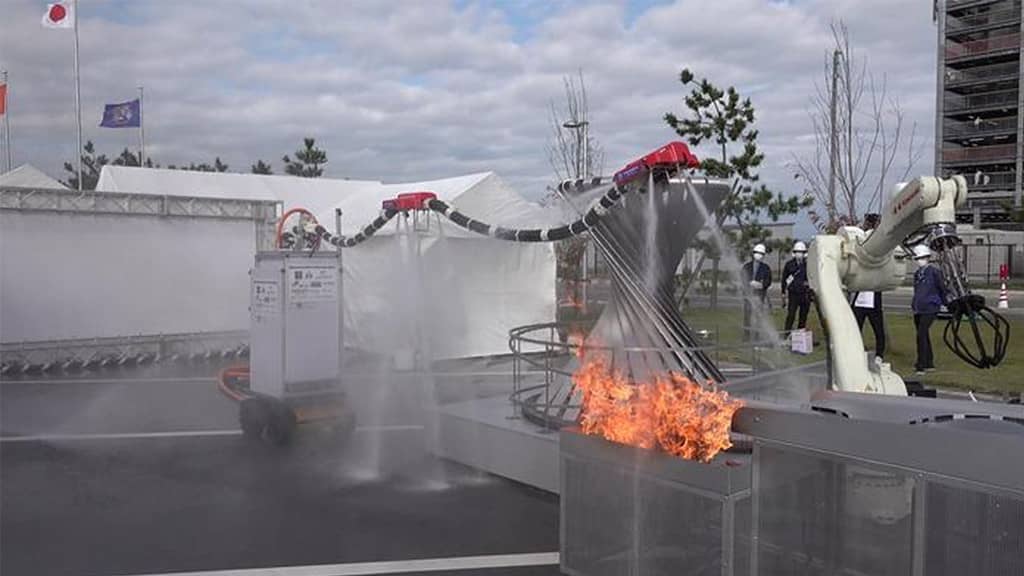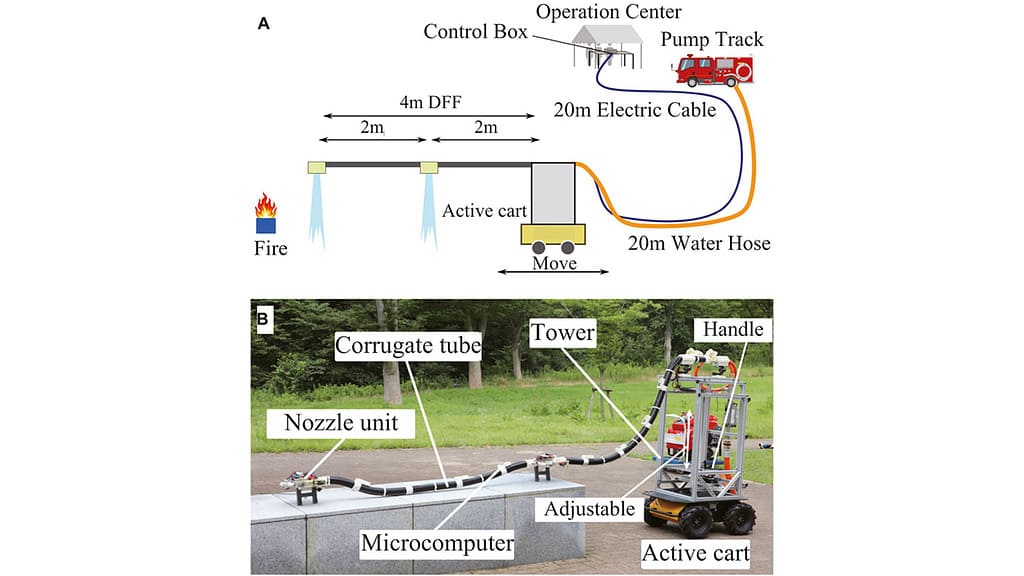
Researchers in Japan have developed a unique remote-controllable firefighting robot that can effectively extinguish fire in situations where it is too dangerous for human firefighters to get involved.
The robot is called Dragon Firefighter (DFF), deriving its name from its four-meter-long aerial hose. When it is used to spray water on fire, it appears as if a flying dragon is releasing water out of its mouth.
DFF has been in development for the last seven years. The researchers presented the robot for the first time during the opening ceremony of the World Robot Summit (WRS) in 2021, showing its ability to extinguish the ceremonial flame from a distance of four meters.
“We proposed the concept of a dragon firefighter (DFF), which is a flying-hose-type firefighting robot. We developed a 3.6 m long DFF (prototype) equipped with two nozzle units and achieved stable flight,” the researchers note.
Decoding the uncanny design of DFF
The DFF design includes eight controllable water jets, a four-meter-long corrugate tube, nozzle units, fish-eye and thermal cameras, and a control unit mounted on a wheeled cart. The cart is further connected to a 14,000-liter water truck and a power supply unit.
When this setup is turned on, water flows from the truck to the corrugate tube.
“Water is supplied into the body and expelled from the nozzle units to achieve flight,” the researchers explain.
The shape, movement, and position of the tube are set via the control unit. Meanwhile, the source of fire is identified using the cameras.

Once this is done and the hose is directly above the fire source, water is discharged at high pressure from the pipe’s head and center at a speed of 6.6 liters per second.
The best part is that the robot is remotely controllable; therefore, none of these steps require a human to be at the burning site.
The researchers believe that DFF can directly target the source of a fire in tunnels, high-rise buildings, and other types of confined spaces where human firefighters can’t be employed.
UAV vs DFF
In the past, scientists have also developed different types of unmanned aerial vehicles (UAVs) having the same firefighting abilities as that of the Dragon Firefighter.
For instance, recently, fire department officials in Portugal began using large drones tethered to fire-proof water pipes to combat wildfires. They believe UAVs are “the future of firefighting.”
So then why do we even need something like the Dragon Firefighter?
Well, this is because DFF can do things that a UAV can’t. The former has a flexible design that achieves flight on its own, just by using the water supply.
Moreover, in the case of UAVs, “When entering the building, particularly in confined spaces, the connected water hose may interfere with the environment and generate a large drag force. In DFF, the entire water hose can be manipulated using multiple nozzle units distributed on the hose,” the study authors explained.
However, when it comes to fire outbreaks in open spaces and forests, UAVs might prove to be more feasible than DFF.
Dragon Firefighter still needs some time
After the first demonstration of the robot in 2021, the researchers realized many limitations of the current design.
For example, they noticed that the material of the corrugate tube sometimes deformed under excess heat which further increased the flight preparation time. Currently, they are also working on increasing the reach of the DFF robot from four meters to ten meters.
Considering many such issues in the design, “We estimate that it will take approximately 10 more years to deploy our robot in real-world firefighting scenarios,” Yuichi Ambe, one of the study authors and an assistant professor at Osaka University, said.
However, the researchers have made their design publicly available as Open Science. Scientists and engineers from other countries could also use this design freely and make safer and better firefighting robots.
The study is published in the journal Frontiers in Robotics and AI.






